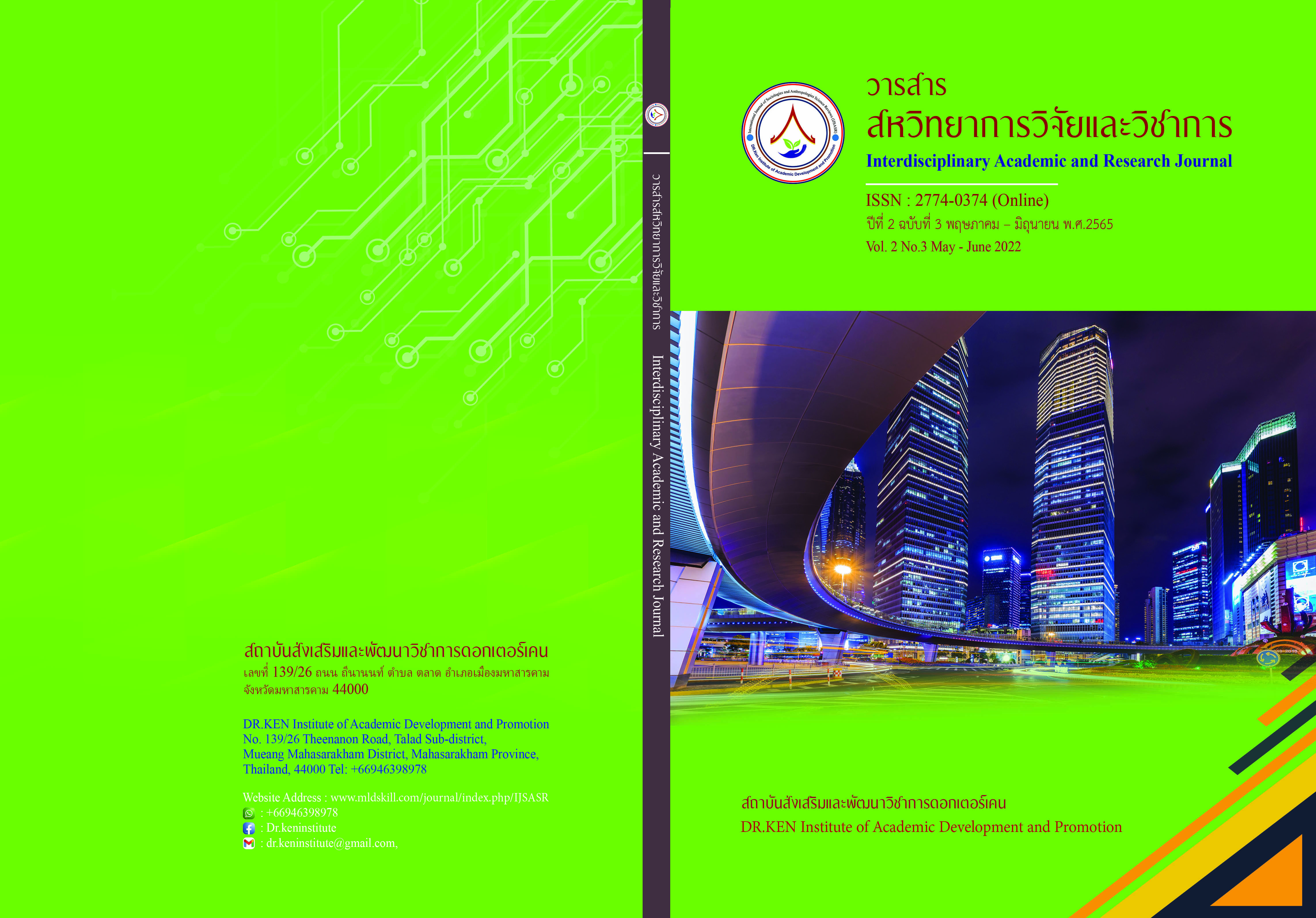The Conditions Led to the Coup D'etat of Thailand
DOI:
https://doi.org/10.14456/iarj.2022.40Keywords:
Revolution; , Coup D'etat; , Conditional FactorAbstract
The coup d'état is against the political action that is in line with the democratic regime. However, in reality, "Coup d'etat" in Thailand has become something many people accept. This article discusses the conditions that led to the coup d'etat of Thailand from the change of government from an absolute monarchy to a democratic regime in 1932 to the present (2022). Over 90 years, Thailand has carried out 19 revolutions coups rebellions, including 13 successful coups and 11 failed coup attempts (Treason). However, out of the 13 successful coups in Thailand, there are two main components: (1) a social class comprising civilians and soldiers; (2) a political party, or a group of people who want to run the country, is set up as a government to run the country. The conditional factors leading to the coup in Thailand can be classified into two important conditional factors as follows: (1) Social factors include economic backwardness. political independence centralization of power in governance economic downturn and the civilian government is unable to resolve the violence and divisions of people in society. (2) The internal factors of a soldier include Military Organization Benefits such as budget support the individuality of the military organization The need to have no competitors, etc. And factors in the army such as the appointment and transfer of important positions in the army budget cuts, etc. Thus, all of these conditional factors formed a cycle that led to the coup. Ultimately, every coup d'état leads to a constitutional amendment, which is the supreme law in governing the country.
References
คึกฤทธิ์ เรกะลาภ. (2551). การแทรกแซงทางการเมืองของทหารไทย : ศึกษากรณีรัฐประหาร 19 กันยายน 2549. วิทยานิพนธ์ปริญญารัฐศาสตร์มหาบัณฑิต แขนงวิชาการเมืองการ ปกครอง มหาวิทยาลัยสุโขทัยธรรมาธิราช
ชัยอนันต์ สมุทวณิช (2539). รัฐ. กรุงเทพฯ : จุฬาลงกรณ์มหาวิทยาลัย.
ชัยอนันต์ สมุทวาณิช. (2524). ประชาธิปไตย สังคมนิยมและคอมมิวนิสต์กับการเมืองไทย. กรุงเทพฯ: ดวงดี
การพิมพ์
ไชยะ เทพา. (2559).การรัฐประหารในการเมืองไทย (Unpublished Master’s thesis). กรุงเทพฯ: มหาวิทยาลัยรามคำแหง.
ติน ปรัชญพฤทธิ์. (2548). ศัพท์รัฐประศาสนศาสตร์. พิมพ์ครั้งที่ 7, กรุงเทพฯ : จุฬาลงกรณ์มหาวิทยาลัย.
ธำรงศักดิ์ เพชรเลิศอนันต์. (2561). ข้ออ้างการปฏิวัติ-รัฐประหาร ในการเมืองไทยสมัยใหม่. กรุงเทพฯ : มูลนิธิโครงการตำราสังคมศาสตร์และมนุษยศาสตร์.
ประชา เทพเกษตรกุล. (2535). การแทรกแซงทางการเมืองของทหารไทย: ศึกษาเฉพาะกรณีการรัฐประหาร
เมื่อวันที่ 23 กุมภาพันธ์ พ.ศ. 2534. วิทยานพนธ์รัฐศาสตร์มหาบัณฑิต สาขาการปกครอง คณะรัฐศาสตร์ มหาวิทยาลัยธรรมศาสตร์.
พีระวุฒิ สุวรรณประสิทธิ์. (2540). การศึกษาปัจจัยที่เข้าแทรกแซงการเมืองไทยโดยการทำรัฐประหารของทหารไทยระหว่าง พ.ศ. 2500-3534. สารนิพนธ์สังคมสงเคราะห์ศาสตร์มหาบัณฑิตมหาวิทยาลัยธรรมศาสตร์.
ภาณุมาศ ขัดเงางาม. (2558). ประชาธิปไตยกับการทำรัฐประหารในประเทศไทย. วารสารรัฐศาสตร์ มหาวิทยาลัยสุโขทัยธรรมาธิราช. 1 (2), 19-32.
ราชบัณฑิตยสถาน. (2554). พจนานุกรมฉับราชบัณฑิตยสถาน พ.ศ. 2542. กรุงเทพฯ: นานมีบุ๊คส์พับลิเคชันส์.
วัลลี นวลหอม และคณะ. (2563). จากเหต์การณ์รัฐประหาร 2557 อันนำไปสู่เผด็จการอำนาจนิยมที่ส่งผลกระทบทั้งสังคม เศรษฐกิจ และการเมืองไทย. งานประชุมวิชาการระดับชาติ ครั้งที่ 12 มหาวิทยาลัยราชภัฏนครปฐม มหาวิทยาลัยราชภัฏนครปฐม 9-10 กรกฎาคม 2563.
สุรชาติ บำรุงสุข. (2558). เสนาธิปไตย: รัฐประหารกับการเมืองไทย. กรุงเทพฯ: สำนักพิมพ์มติชน.
อุมาพร อินทะวงค์. (2551) ปัจจัยที่นำมาซึ่งการทำรัฐประหาร โดยพลเอกสนธิ บุญยรัตกลิน. มหาวิทยาลัยเชียงใหม่:เชียงใหม่.
David Jary and Julia Jary, ed. (2005). Collins Dictionary of Sociology. Third Edition, United Kingdom: Collins.
Luttwak, Edward. (1976). The grand strategy of the Roman Empire. Baltimore: Johns Hopkins Univ.
Downloads
Published
How to Cite
Issue
Section
License
Copyright (c) 2022 Angkarat Detwattanayotin

This work is licensed under a Creative Commons Attribution-NonCommercial-NoDerivatives 4.0 International License.
Copyright on any article in the Interdisciplinary Academic and Research Journal is retained by the author(s) under the under the Creative Commons Attribution-NonCommercial-NoDerivatives 4.0 International License. Permission to use text, content, images, etc. of publication. Any user to read, download, copy, distribute, print, search, or link to the full texts of articles, crawl them for indexing, pass them as data to software, or use them for any other lawful purpose. But do not use it for commercial use or with the intent to benefit any business.
















.png)


